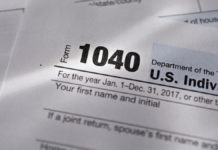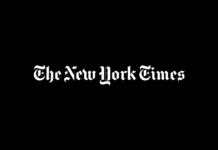Reprisal killings of journalists because of their work nearly doubled in 2018, bringing the total number of journalists killed on the job to the highest point in three years, a press advocacy group reported on Wednesday.
The October killing of the Washington Post columnist Jamal Khashoggi by a Saudi hit squad in Turkey may have been the most prominent case, but journalists were targeted for death all over the world this year — including in the United States, where a gunman killed five people in a Maryland newsroom.
At least 53 journalists were killed worldwide, according to a database compiled by the Committee to Protect Journalists, a New York-based organization that keeps detailed records of deaths and imprisonments in the news profession.
Of those journalists, the database showed that at least 34 had been killed because of their work, compared with 18 in 2017. The database covered killings between Jan. 1 and Dec. 14.
More journalists were killed than in any year since 2015, when the total was 73, the database showed. At least 50 journalists were killed in 2016 and 47 in 2017.
The Committee to Protect Journalists monitors three categories of journalist deaths on the job: reprisal killings, deaths in combat or crossfire, and deaths on other hazardous assignments, such as riots.
The latest findings reinforced what press advocates have described as an increasingly dangerous and repressive climate for journalists nearly everywhere.
The deadliest country for journalists in 2018 was Afghanistan, where 13 were killed. That is the most in any year for Afghanistan since the Committee to Protect Journalists began keeping detailed track of journalist deaths globally in 1992.
The findings were released a week after the group issued an annual tally of jailed journalists that showed at least 250 were behind bars in 2018 for the third consecutive year. The group said the jailings reflected an authoritarian response to critical news coverage that represented “the new normal.”
The increase in killings this year after two years of decline, combined with the data on jailings, amounts to “a profound global crisis in press freedom,” the Committee to Protect Journalists said in a statement.
The group blamed the crisis partly on what it called a “lack of international leadership on journalists’ rights and safety,” pointing to the killing of Mr. Khashoggi as a prime example.
Mr. Khashoggi, a Saudi who lived in self-imposed exile in the United States, was a prominent critic of Saudi Arabia’s crown prince, Mohammed bin Salman, the de facto leader of the kingdom, who has little or no tolerance for dissent.
The Central Intelligence Agency has concluded that the crown prince directed the Saudi operatives who killed and dismembered Mr. Khashoggi at the Saudi consulate in Istanbul. But the victim’s most ardent defender, President Recep Tayyip Erdogan of Turkey, is no supporter of a free press — his government has imprisoned more journalists than any other.
And while the United States historically has been a strong defender of press freedom, President Trump has not only disputed the C.I.A.’s conclusions blaming Prince Mohammed but has suggested that America’s strategic alliance with Saudi Arabia takes priority regardless.
“Essentially, Trump signaled that countries that do enough business with the United States are free to murder journalists without consequence,” the Committee to Protect Journalists said.
Press advocates have repeatedly criticized Mr. Trump for his denunciations of coverage he does not like as “fake news” and for his description of news organizations as the “enemy of the people.” A number of prominent news executives, including from The New York Times, have said that the president’s words put the physical safety of journalists at risk.
The Committee to Protect Journalists said the atmosphere of lethal danger was underscored in June at the Capital Gazette in Annapolis, Md., where a gunman with a grudge against the newspaper killed four journalists and a sales associate. It was the deadliest single attack on the news media in recent American history.
Mr. Trump told reporters afterward that “journalists, like all Americans, should be free from the fear of being violently attacked while doing their jobs.” But within days, the Committee to Protect Journalists said, the president “had resumed his characteristic attacks on the press.”
Source : Nytimes







-100x70.jpg)




